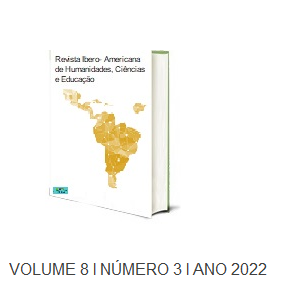FALLS OF THE ELDERLY AT HOME
DOI:
https://doi.org/10.51891/rease.v8i3.4537Keywords:
Falls. Elderly. Prevention. Home.Abstract
Falls occur in all age groups, especially when you are a child and later at a more advanced age, but it is in the latter that the prevalence of the risk of falling and the resulting damage are more worrying, because the elderly who fall require hospitalization, for the most part, which leads to an increase in health service costs. Falls are the second leading cause of unintentional death worldwide(8). Some risk factors can be changed and prevented, while others cannot be eliminated.Objective: to identify risk factors for falls at home.Methodology: this is a descriptive study, with a sample of 10 elderly people. Data collection was performed using a questionnaire adapted from the Jefferson Area Board for Aging (1998) assessment of home safety (Stanhope & Lancaster, 2011), an instrument to assess the risk of falls (Potter & Perry, 2006) and adaptations at home to prevent falls (Duarte & Barbosa, 2011 in Ribeiro & Paúl, 2011). Data analysis was performed using the Statistical Package for the Social Sciences version 27.0 software.Results: the average age of the participants is 75,5 years, the youngest is 65 years old and the oldest is 92 years old. As for gender, 50% are female and 50% are male. As for the types of drugs that are ingested, it is observed that 50% of people take diuretics or with diuretic effects, 70% are medicated with antihypertensives or central nervous system depressants and 20% take drugs that increase gastrointestinal motility. Current health problems are obesity (30%), diabetes (90%), high blood pressure (80%), rheumatic diseases (40%), osteoporosis (20%), vision problems (90%), hearing difficulties ( 30%) and 10% still have other problems than those mentioned above. Although 90% of the elderly have vision problems, only 66,67% use means to correct this problem and those who claim to have hearing problems (30%), none of them use means of correction for this need. We found that 90% of the elderly showed difficulty in walking and all use walking aids, which are a cane (33,33%), a wheelchair (33,33%), crutches (22,22%) and 11,11% use a tripod. When asked about the inability to get up from a chair, without using the support of at least one of the arms, 80% of people say they have this incapacity. About balance problems, 90% have this problem, the same value for those who have fallen. Of the 90% who had already fallen, they were asked how many times they had fallen in the last year and 3 elderly people had fallen once, 3 had fallen twice and another 3 had fallen five or more times. Regarding the time elapsed since the last fall, 55,56% of the elderly said they fell between 1 month and 6 months ago and 33,33% had their last fall more than 6 months ago and less than a year ago, only 11,11% fell more than one year ago. As for the place where the person fell, 44,44% of the participants suffered the fall in the bedroom, 11,11% fell in the bathroom, kitchen or backyard and 22,22% in places other than those identified in the questionnaire. Regarding the apparent reason for the fall, 33,33% said they were unbalanced, 22,22% said that the fall resulted from dizziness and the same percentage because they tripped, and 22,22% of elderly people point to another cause for the fall. Although 90% of the elderly had already fallen, only one (11,11%) required hospitalization due to a fracture of the femoral neck. There are no safety bars in the shower or toilet next to the toilet, as well as an emergency light, the same is true for bedroom and living room furniture that is not fixed to the floor. The non-slip floor is only found in the kitchen of a house. Regarding rugs, there are 37,5% of homes that have a rug next to the first and last step of the stairs, 25% have a rug in the bedroom and 12,5% in the kitchen. 87,5% of the elderly have difficulty going up and/or down stairs/steps and half of the houses do not have handrails next to them.Conclusion: after analyzing the data, it can be concluded that there are several fall risk factors present, both at a personal level (intrinsic factors) and at the level of the physical environment of the house (extrinsic factors).
Downloads
Downloads
Published
How to Cite
Issue
Section
Categories
License
Atribuição CC BY

